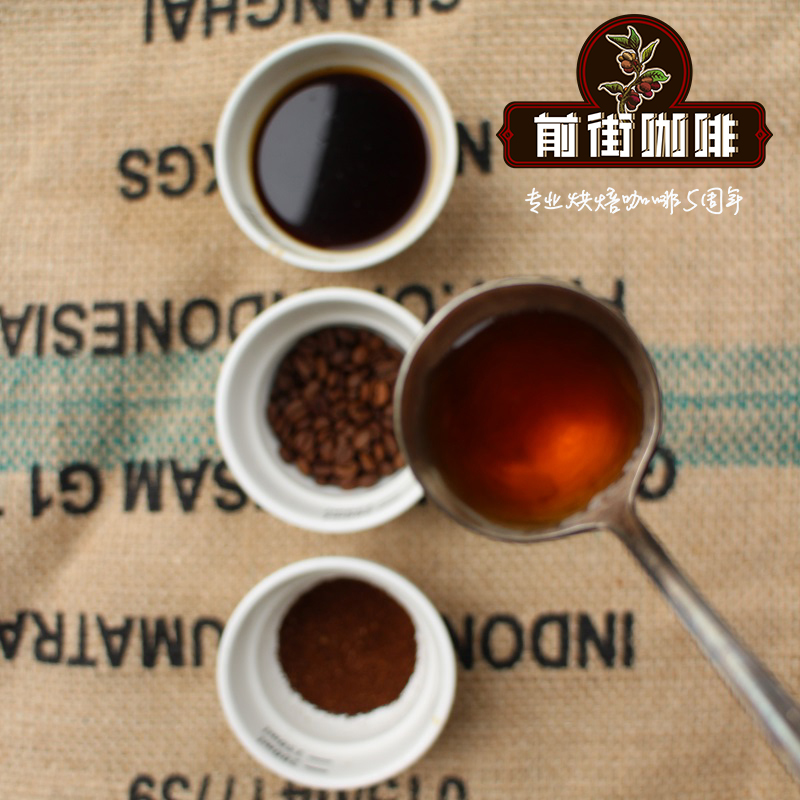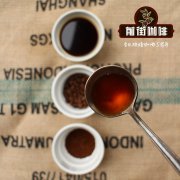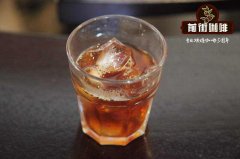Coffee growing history of Lake Kivu, Congo, an African coffee growing region? Raw bean treatment of Congolese coffee

Professional coffee knowledge exchange more coffee bean information please follow the coffee workshop (Wechat official account cafe_style)
Coffee growing history of Lake Kivu, Congo, an African coffee growing region? How to handle raw beans of Congolese coffee?
The Democratic Republic of the Congo (DRC), known as the Democratic Republic of the Congo (DRC), runs through the north of the equator, mainly in central Africa, adjacent to another Congo (Congo-Brazzaville) across the Congo River. The Democratic Republic of the Congo was once known as Zaire, the capital of Kinshasa. In Chinese, the word "Jin" of the capital was added to the name of the country to distinguish between the two countries. The famous coffee in Congo (D.R.Congo) is Kivu. It gets its name from Lake kivu on the border with Rwanda. In fact, there are two kinds of kivu in Congo: the western part is low-lying, which is not authentic kivu, while the eastern part is high-lying and close to Lake kivu, producing authentic Kivu-4 coffee.
Due to the continuous civil war in Congo, the production and treatment of coffee beans have been taught, so although it is also bred by Lake Kivu, the quality of coffee is generally lower than that of Rwandan coffee on the east coast. Congo Kim joined the East African EasternAfricaFineCoffeeAssosiation (East African Fine Coffee Association) with a view to further improving the output and quality of exported coffee. The Democratic Republic of the Congo (DRC), known as the Democratic Republic of the Congo (DRC), runs through the north of the equator, mainly in central Africa, adjacent to another Congo (Congo-Brazzaville) across the Congo River. The Democratic Republic of the Congo was once known as Zaire, the capital of Kinshasa. In Chinese, the word "Jin" of the capital was added to the name of the country to distinguish between the two countries. The famous coffee in the Democratic Republic of the Congo is Kivu. It gets its name from Lake kivu on the border with Rwanda. In fact, there are two kinds of kivu in Congo: the western part is low-lying, which is not authentic kivu, while the eastern part is high-lying and close to Lake kivu, producing authentic Kivu-4 coffee. Due to the continuous civil war in Congo, the production and treatment of coffee beans have been taught, so although they are both bred by Lake Kivu, the quality of coffee is generally worse than that of Rwandan coffee on the east coast. This year, Democratic Republic of the Congo joined the East Africa's Eastern Africa Fine Coffee Assosiation (East African Fine Coffee Association) in order to further improve the output and quality of coffee for export.
It is well known that coffee originated in Ethiopia, the earliest Arabica variety, while Robusta originated in Uganda, both of which are from Africa. As the hometown of coffee, Africa not only has many excellent coffee varieties, but also is still one of the three largest coffee producing areas in the world. The flavor and taste of African coffee is the most complex and excellent; due to the appropriate altitude and climate, African coffee tastes better than coffee from South America and Southeast Asia; this is an unofficial evaluation from the International Coffee Organization (ICO). However, due to poverty, coupled with deficiencies in publicity and brand building, backward coffee cultivation and harvesting technology and lack of government regulation, the export volume and popularity of coffee beans in Africa are far lower than those of coffee producers in South America and Southeast Asia, led by Brazil. Over the last decade, several major African exporters (such as Ethiopia, Kenya, Uganda, Tanzania and Rwanda) have stepped up regulation of coffee production and trade, reducing the circulation of raw coffee beans and bringing better quality African coffee beans to the world by improving planting, harvesting and storage technologies. Better quality has promoted the brand construction of boutique coffee in various countries. Nowadays, coffee beans such as AA (Kenya AA) of Kenya, Yirgacheffe of Ethiopia, Harald (Harar) and Bujisu AA (Bugisu AA) of Uganda have become the ranks of boutique coffee with world reputation; it is believed that more and more African coffee varieties will be recognized by people and join the ranks of world boutique coffee.
Lake Kivu (Lake Kivu) is the natural border between Rwanda and Congo, and the Kavisa washing plant is in North Kivu, just northwest of the lake.
In recent decades, the Democratic Republic of the Congo has encountered many difficulties, leading to unrest and social division. The civil war that has continued since the mid-1990s, as well as the problems of colonies in the past, have undermined the stability of the regional economy, continued economic instability and are facing the plight of becoming a failed state. The problem of political corruption is rampant, and the exploitation of its rich minerals has made the situation even worse, and rural farmers have become the biggest victims.
Usually, coffee farmers can only resell the cherries they produce each year to intermediaries at very low prices and have been exploited all the time. However, with the efforts of professional coffee importers in recent years, it has been gradually improved. By providing small farmers with fair and transparent access to the market, farmers' livelihoods have been improved, coffee culture has gradually developed, and they have begun to devote themselves to the production of excellent coffee.
Kavisa deals with it in a typical way in Lake Kivu. After the cherries are harvested, they will be sent to the washing field for treatment within 12 hours, and then the cherries will be separated according to their size and density, and the peel and pulp will be removed. The shelled coffee beans are then wet fermented, depending on climatic conditions, for about 18-24 hours. Finally, the coffee beans were placed on an African elevated platform to dry for about 20 days.
Flavor characteristics: charming acidity
African bean flavor: Ethiopian coffee has a strong orange flavor, Kenyan coffee has a strong raspberry flavor, as well as sour aromas of black plum juice and grapefruit, and sweet sugar cane. The orange aroma of Ethiopian coffee and the raspberry flavor of Kenyan coffee are the biggest features of African beans and attract coffee fans to delve into.
African coffee is generally characterized by strong aroma and charming acidity, its sour brightness is lively and exhilarating, but African coffee is often slightly thin and not very sweet. African coffee due to drought and lack of water, mostly use the sun method to deal with raw beans, the bean shape is often uneven and beautiful, and the defect rate is high.
Qianjie recommended cooking:
Filter cup: KONO filter cup
Water temperature: 88 degrees
Degree of grinding: small Fuji degree of grinding 4
Cooking method: the ratio of water to flour is 1:14, 17g powder, 25g water for the first time, steaming for 30s, and 238g water for the second time. The extraction time is about 2:30 seconds.
Analysis: there are not many ribs at the bottom of the Kono cup, and the filter paper clings to the filter cup to achieve the purpose of limiting air flow, which can make water and coffee powder have longer contact soaking time in the filter cup and ensure the extraction time and extraction rate of rough grinding. In this way, the coffee powder can be fully extracted, enhance the mellow taste and make the taste more concentrated.
Flavor: well balanced, clean, thick and solid on the palate, with a long dark chocolate finish.
Important Notice :
前街咖啡 FrontStreet Coffee has moved to new addredd:
FrontStreet Coffee Address: 315,Donghua East Road,GuangZhou
Tel:020 38364473
- Prev

Congo coffee producing country-Lake Kivu Kaisa washing plant red bourbon coffee flavor? Alabica, Congo
Professional coffee knowledge exchange more coffee bean information please follow the coffee workshop (Wechat official account cafe_style) Congo coffee country-Lake Kivu Kavisa washing factory red bourbon coffee flavor? What is the variety of Arabica coffee beans in Congo? Coffee in Congo is mainly grown around Lake Kiev (Kivu); Lake Kiev is a very good coffee-growing area along the coast.
- Next

What are the coffee-producing areas in Africa? How does African coffee taste good? A famous coffee maker in Africa
Professional coffee knowledge exchange more coffee bean information please follow the coffee workshop (Wechat official account cafe_style) what are the coffee-producing areas in Africa? How does African coffee taste good? What are the famous coffee producing countries in Africa? Africa is the birthplace of coffee, and there are naturally many coffee-producing countries. Congo, Rwanda, Kenya, Angola, Zimbabwe, Mosang
Related
- Detailed explanation of Jadeite planting Land in Panamanian Jadeite Manor introduction to the grading system of Jadeite competitive bidding, Red bid, Green bid and Rose Summer
- Story of Coffee planting in Brenka region of Costa Rica Stonehenge Manor anaerobic heavy honey treatment of flavor mouth
- What's on the barrel of Blue Mountain Coffee beans?
- Can American coffee also pull flowers? How to use hot American style to pull out a good-looking pattern?
- Can you make a cold extract with coffee beans? What is the right proportion for cold-extracted coffee formula?
- Indonesian PWN Gold Mandrine Coffee Origin Features Flavor How to Chong? Mandolin coffee is American.
- A brief introduction to the flavor characteristics of Brazilian yellow bourbon coffee beans
- What is the effect of different water quality on the flavor of cold-extracted coffee? What kind of water is best for brewing coffee?
- Why do you think of Rose Summer whenever you mention Panamanian coffee?
- Introduction to the characteristics of authentic blue mountain coffee bean producing areas? What is the CIB Coffee Authority in Jamaica?

